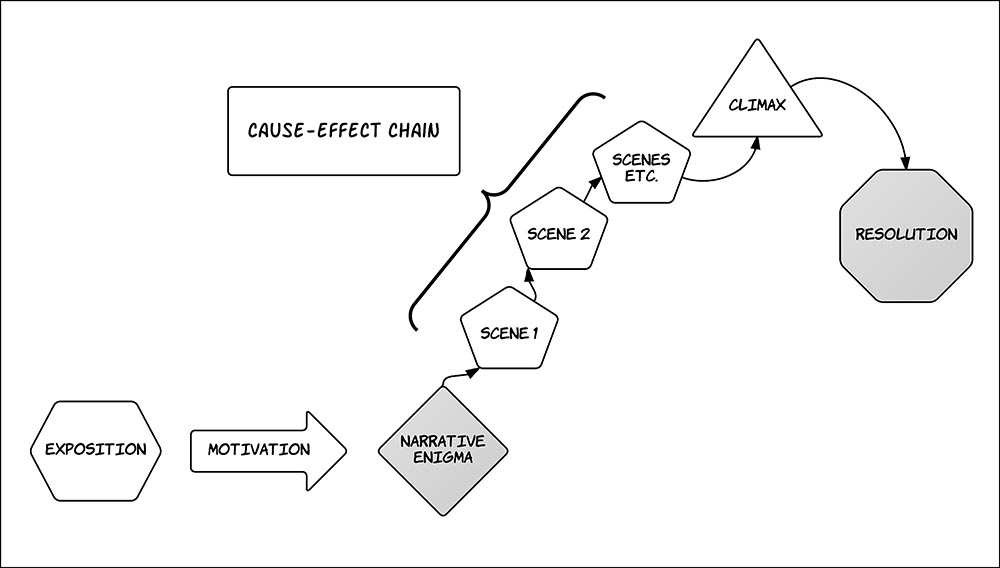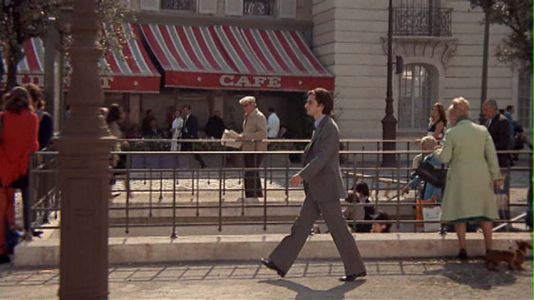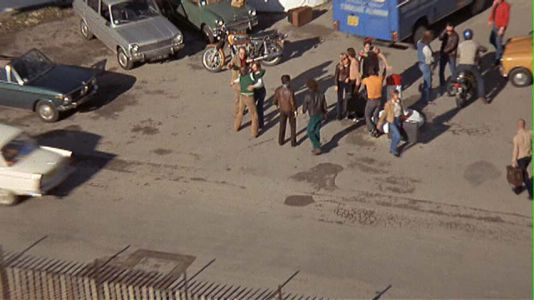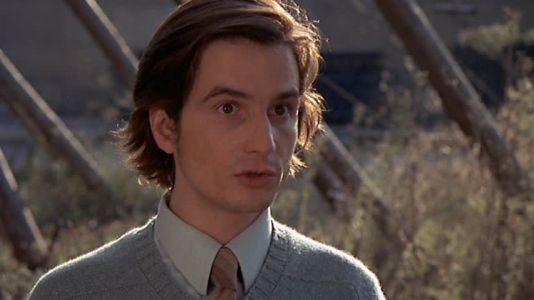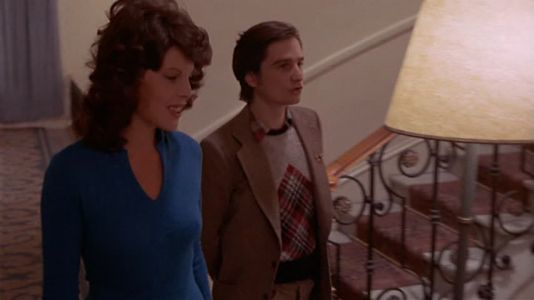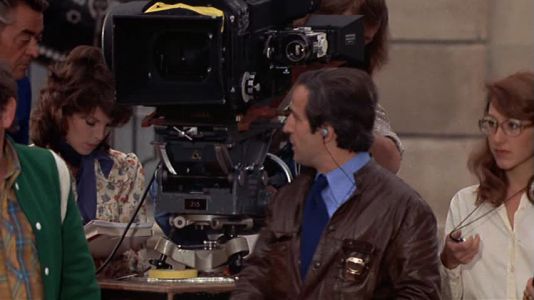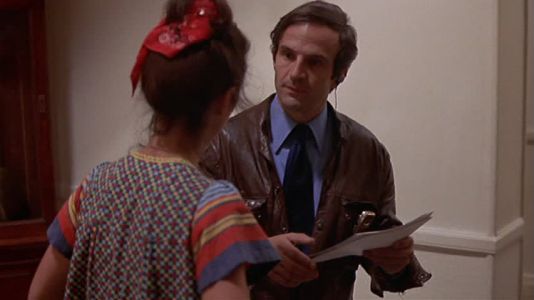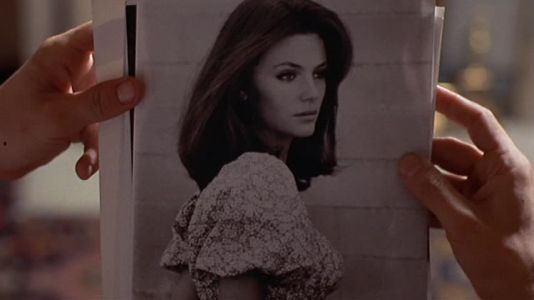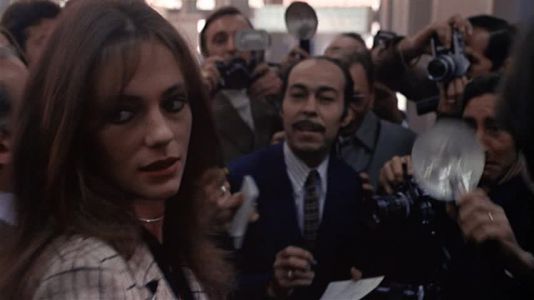Difference between revisions of "JCM312/Narrative Structure"
From Screenpedia
Jump to navigationJump to search (→Structure: added photo gallery) |
(→External links: added password) |
||
| (33 intermediate revisions by 2 users not shown) | |||
| Line 1: | Line 1: | ||
| − | == | + | ==Classical Hollywood cinema== |
| − | + | <gallery mode="packed" heights=800px> | |
| − | + | File:Narrative Structure - Classical Film.jpeg|alt=Diagram of classical narrative structure.|''Television'' Figure 3.6 The rise and fall of the narrative action in classical film. | |
| − | + | </gallery> | |
| − | |||
| − | |||
| − | |||
| − | < | ||
| − | |||
| − | |||
| − | |||
| − | |||
| − | |||
| − | |||
| − | |||
| − | |||
| − | + | ''Television'' discusses seven principal characteristics of classical Hollywood cinema. Explain the terms below and discuss whether they apply to ''Day for Night''. | |
| − | + | #'''G1 and G5''': Single protagonist | |
| − | # | + | #'''G1 and G5''': Exposition |
| − | # | + | #'''G2''': Motivation |
| + | #'''G2''': Narrative enigma | ||
| + | #'''G3''': Cause-effect chain | ||
| + | #*'''G3''': ''Story time'' versus ''screen time''--in terms of duration and order | ||
| + | #'''G4''': Climax | ||
| + | #'''G4''': Resolution/Denouement--compare exposition and denouement | ||
| − | + | '''All groups:''' Does ''Day for Night'' qualify as a classical film? Why or why not? Explain how the characteristics above are (or are not) used in the film. | |
| − | |||
| − | |||
| − | |||
| − | |||
| − | |||
| − | |||
| − | ===Classical | + | <gallery mode="packed" heights=200px> |
| − | # | + | File:DayForNightqq00 02 29qq00011.jpg|alt=First shot.|First shot. |
| − | + | File:DayForNightqq01 54 22qq00023.jpg|alt=Final shot.|Final shot ([http://www.tcf.ua.edu/Classes/Jbutler/T340/DayForNight-OpenClose/pages/DayForNightqq01_54_22qq00023.htm larger image]). | |
| − | # | + | </gallery> |
| − | # | + | |
| − | # | + | |
| − | # | + | <gallery mode="packed" heights=800px> |
| − | + | File:Narrative Structure - Classical Film.jpeg|alt=Diagram of classical narrative structure.|''Television'' Figure 3.6 The rise and fall of the narrative action in classical film. | |
| − | + | </gallery> | |
| + | |||
| + | |||
| + | ==Signs of character<ref name="Dyer">Richard Dyer, ''Stars''</ref>== | ||
| + | #Viewer foreknowledge | ||
| + | #Character name | ||
| + | #Appearance | ||
| + | #Objective correlative | ||
| + | #Dialogue | ||
| + | #Lighting and videography or cinematography | ||
| + | #Action | ||
| + | |||
| + | How are these signs of character used to construct the following characters in ''Day for Night''? | ||
| + | *'''G1 and G5''': Alphonse | ||
| + | *'''G2''': Julie | ||
| + | *'''G3''': Ferrand | ||
| + | *'''G4''': Liliane | ||
| + | |||
| + | <gallery mode="packed" heights=200px> | ||
| + | File:DayForNightqq00 05 15qq00006.jpg|alt=Frame grab of Alphonse.|First close-up of Alphonse. | ||
| + | File:DayForNightqq00 10 09qq00017.jpg|alt=Frame grab of Alphonse and Liliane.|Alphonse and Liliane in the hotel. | ||
| + | File:DayForNightqq00 06 49qq00007.jpg|alt=Frame grab of Ferrand.|First close-up of Ferrand. | ||
| + | File:DayForNightqq00 08 28qq00013.jpg|alt=Frame grab of Ferrand.|Ferrand discusses Julie's photos. See also, [http://www.tcf.ua.edu/Classes/Jbutler/T340/DayForNight_FerrandsBooks/index.php Ferrand's books.] | ||
| + | File:DayForNightqq00 08 38qq00014.jpg|alt=Frame grab of Julie's photograph.|First appearance of Julie, in a photograph. | ||
| + | File:DayForNightqq00 38 49qq00043.jpg|alt=Frame grab of Julie.|Julie arrives, amid paparazzi. | ||
| + | </gallery> | ||
| + | |||
| + | ==Signs of performance<ref name="Dyer" />== | ||
| + | #'''G1 and G5''': Vocal | ||
| + | #'''G2''': Facial | ||
| + | #'''G3''': Gestural | ||
| + | #'''G4''': Corporeal | ||
| + | |||
| + | ==''Day for Night'' cast== | ||
| + | <!--Hotlinked to Wikipedia articles --> | ||
| + | * [[Wikipedia:Jacqueline Bisset|Jacqueline Bisset]] as Julie | ||
| + | * [[Wikipedia:Valentina Cortese|Valentina Cortese]] as Severine | ||
| + | * [[Wikipedia:Dani (entertainer)|Dani]] as Liliane | ||
| + | * [[Wikipedia:Alexandra Stewart|Alexandra Stewart]] as Stacey | ||
| + | * [[Wikipedia:Jean-Pierre Aumont|Jean-Pierre Aumont]] as Alexandre | ||
| + | * [[Wikipedia:Jean Champion|Jean Champion]] as Bertrand | ||
| + | * [[Wikipedia:Jean-Pierre Léaud|Jean-Pierre Léaud]] as Alphonse | ||
| + | * [[Wikipedia:François Truffaut|François Truffaut]] as (Director) Ferrand | ||
| + | * [[Wikipedia:Nathalie Baye|Nathalie Baye]] as Joelle | ||
| + | * [[Wikipedia:David Markham|David Markham]] as Doctor Nelson | ||
| + | * [[Wikipedia:Zénaïde Rossi|Zénaïde Rossi]] as Madame Lajoie, Gaston's wife | ||
| + | * [[Wikipedia:Xavier Saint-Macary|Xavier Saint-Macary]] as Christian, Alexandre's lover | ||
| + | * Bernard Menez as the Property Man | ||
| + | |||
| + | ==References== | ||
| + | <references/> | ||
== Bibliography == | == Bibliography == | ||
| + | #Jeremy G. Butler, ''Television: Visual Storytelling and Screen Culture'', 5th Edition (New York: Routledge, 2018). | ||
#David Bordwell and Kristin Thompson, ''Film Art: An Introduction'', 9th ed. (New York: McGraw-Hill, 2010). | #David Bordwell and Kristin Thompson, ''Film Art: An Introduction'', 9th ed. (New York: McGraw-Hill, 2010). | ||
==External links== | ==External links== | ||
| − | #[http:// | + | #[http://tvcrit.org/Classes/Jbutler/T340/DayForNight/index.htm Frame grabs] from ''Day for Night''. |
| − | #[ | + | #[https://vimeo.com/345099318 Wes Anderson American Express Commercial] (''Day for Night'' parody, password protected: tcf123abc! ) |
#[http://tvtropes.org/pmwiki/pmwiki.php/Main/HomePage ''TV Tropes'']: listing of numerous narrative conventions. | #[http://tvtropes.org/pmwiki/pmwiki.php/Main/HomePage ''TV Tropes'']: listing of numerous narrative conventions. | ||
| − | [[Category: | + | [[Category:JCM312 Discussion]] |
Latest revision as of 21:23, 29 August 2019
Classical Hollywood cinema
Television discusses seven principal characteristics of classical Hollywood cinema. Explain the terms below and discuss whether they apply to Day for Night.
- G1 and G5: Single protagonist
- G1 and G5: Exposition
- G2: Motivation
- G2: Narrative enigma
- G3: Cause-effect chain
- G3: Story time versus screen time--in terms of duration and order
- G4: Climax
- G4: Resolution/Denouement--compare exposition and denouement
All groups: Does Day for Night qualify as a classical film? Why or why not? Explain how the characteristics above are (or are not) used in the film.
Final shot (larger image).
Signs of character[1]
- Viewer foreknowledge
- Character name
- Appearance
- Objective correlative
- Dialogue
- Lighting and videography or cinematography
- Action
How are these signs of character used to construct the following characters in Day for Night?
- G1 and G5: Alphonse
- G2: Julie
- G3: Ferrand
- G4: Liliane
Ferrand discusses Julie's photos. See also, Ferrand's books.
Signs of performance[1]
- G1 and G5: Vocal
- G2: Facial
- G3: Gestural
- G4: Corporeal
Day for Night cast
- Jacqueline Bisset as Julie
- Valentina Cortese as Severine
- Dani as Liliane
- Alexandra Stewart as Stacey
- Jean-Pierre Aumont as Alexandre
- Jean Champion as Bertrand
- Jean-Pierre Léaud as Alphonse
- François Truffaut as (Director) Ferrand
- Nathalie Baye as Joelle
- David Markham as Doctor Nelson
- Zénaïde Rossi as Madame Lajoie, Gaston's wife
- Xavier Saint-Macary as Christian, Alexandre's lover
- Bernard Menez as the Property Man
References
Bibliography
- Jeremy G. Butler, Television: Visual Storytelling and Screen Culture, 5th Edition (New York: Routledge, 2018).
- David Bordwell and Kristin Thompson, Film Art: An Introduction, 9th ed. (New York: McGraw-Hill, 2010).
External links
- Frame grabs from Day for Night.
- Wes Anderson American Express Commercial (Day for Night parody, password protected: tcf123abc! )
- TV Tropes: listing of numerous narrative conventions.
